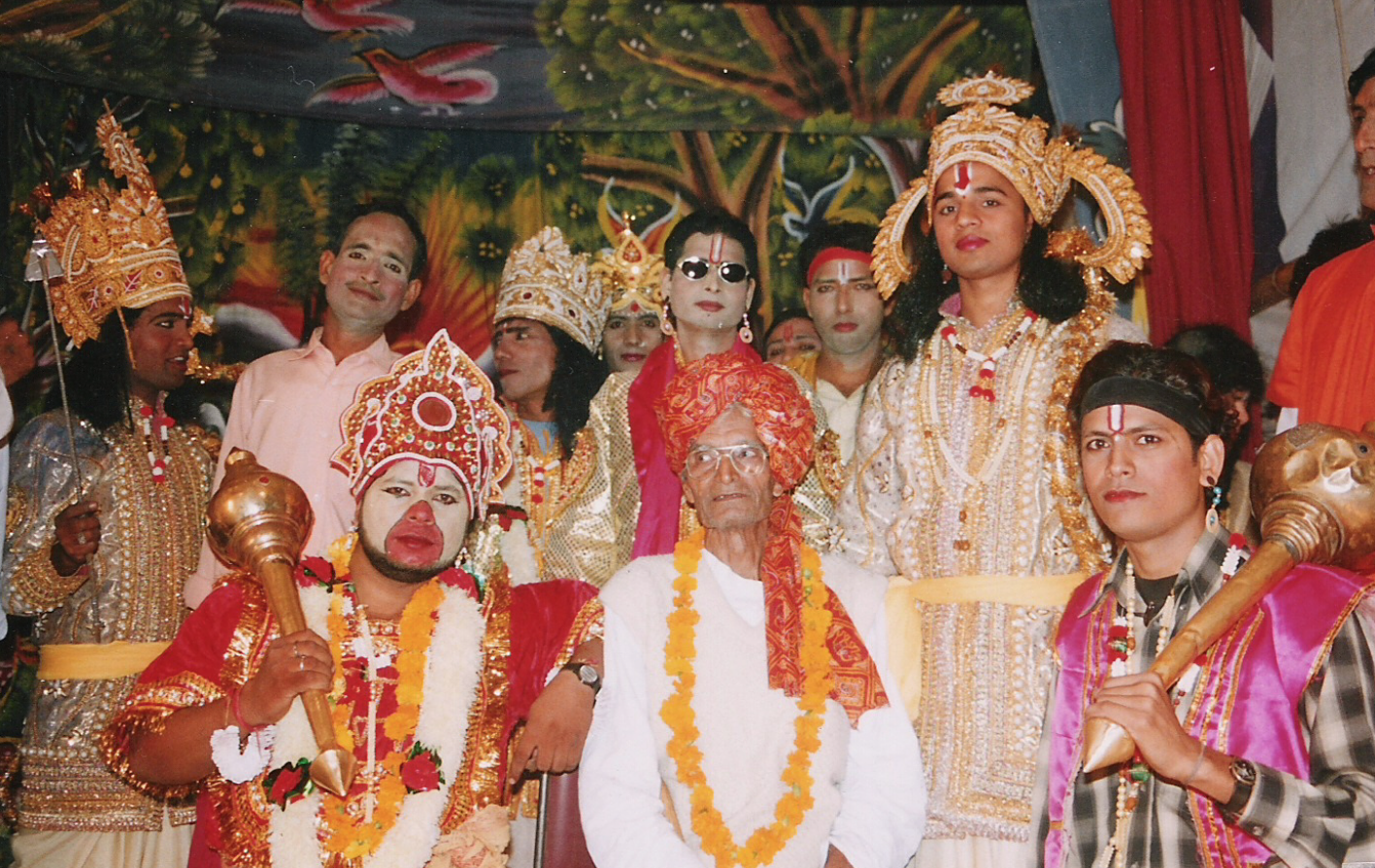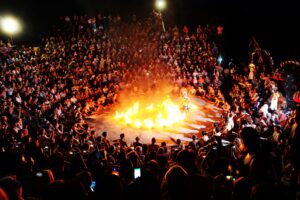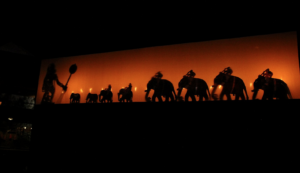Explore different faces of Ramlila
Ramayana, India’s best-known historical epic, tells the tale of the Indian Prince Lord Ram, whose wife Sita is stolen from him by the ten-headed demon King Ravana and taken to his mountain kingdom. Aided by his brother Lakshman and the loyal monkey god Hanuman, Ram eventually rescues Sita in a series of heroic battles.
Every year during autumn, the Hindu festival Dussehra comes around to mark the victory of Lord Ram over Ravana in the battlefield, when devotees burn Ravana’s effigies to celebrate his defeat to Ram and the triumph of good over evil. In the days leading up to Dussehra, hundreds of travelling actors, artists, musicians and dancers present the epic story as a dramatic folk re-enactment in villages and cities across the country. This tradition often lasts several days and is known as Ramlila, particularly notable in spiritually important cities such as Ayodhya or Varanasi in Uttar Pradesh. In effect, Ramlila has been performed in large tracts of north India for centuries. The open-air productions are staged by local Ramlila committees, known as Samitis and usually funded entirely by the residents of the locality and feature a core team of performance artists who train for months in preparation for the grand event.
With the expansion of the Indian diaspora abroad, especially due to 20th century immigration, the cultural celebration of Ramlila is now executed globally, notably in the US, UK, Africa and Singapore.
In Southeast Asia, countries such as Thailand, Indonesia, Myanmar and Cambodia, which have a significant Hindu population and history, artists perform their own unique renditions of Ramayana. In fact, many kings in such countries have incorporated the name of Lord Rama in their titles, and cities and islands are named after important characters and places in the epic. In the island of Bali in Indonesia for example, Balinese Hinduism has been formally recognised by the Indonesian government as an official religion, and about 87 pc of Balinese locals identify as Hindu. Kecak Fire Dance is an enthralling dance and art form developed in the region in the 1930s and is based on Sita’s abduction by Ravana. Performed without traditional music, the gripping show involves a choir of vocalists who represent Hanuman’s monkey army, and a heart-stopping ending with an actor walking over red-hot coconut shells, which represents the fire. The performances are not restricted to religious beliefs however, with many of these participants actually of Muslim faith, and in previous years, Muslim artists part of a Ramlila Samiti from Indonesia were brought to Ayodhya to perform.
Various tribes and regions of India boast their own version of the beloved epic, depicting the iconic stories through poetry, pantomime, and beloved movies and songs.
Mandalis
One of the most popular Ramlilas is staged by professional troupes called mandalis, and one of the most well-known and extravagant performances is at Ramnagar in Varanasi. Over 200 years old, the tradition started in 1830 and is a 31-day event famed for having lavish sets, decoration and dialogues. In 2008, it was recognised as an intangible world cultural heritage by UNESCO.
Presented against the backdrop of Ramnagar Fort, under an open sky and set with traditional lamps, this iconic Ramlila draws a crowd of up to 100,000 not only from Varanasi but also from other parts of India, as well as foreigners who come to view the annual spectacle.
The attraction of Ramlila performances lies in its melodramatic portrayal, to create the greatest impact on audiences that know the story by heart but continue to love the enactments. In villages especially, Ramlila performances focus on engaging audience participation and bringing all spectators together, without distinction of class or age, by inviting the viewers to spontaneously sing to the chorus and even take part in the narration. At times, the script is edited to include relevant social messages as well.
Operatic Ramlila
A distinctive variant of Ramlila is the operatic style, which incorporates elements of musical folk theatre in addition to the beloved traditional techniques. Here, the couplets of Ramacharitmanas as well as the dialogues are sung to classical ragas. As is the norm in Indian folk art, specific themes are often interwoven in the script and infused with humour to lend a critical commentary of over current social issues.
One of the most notable Ramlila performances in this style was a collaborative musical that brought opera, ballet and broadway together at the Siri Fort Auditorium in Delhi in 2014. The show featured 100 artists from India and abroad from Hungary, France, Italy and USA, and showcased an incredible cultural blend of both opera and classical Indian dance forms like West Bengal’s Purulia Chhau, Manipuri and Kathak.
Shadow Art and Puppetry in Ramlila
During the 12th to 13th centuries, Ramayana surfaced in South East Asia, inspiring literary and theatrical works such as the royal shows in Thailand known as Ramakien (Glory of Rama), Myanmar’s Buddhist Ramayana in which Ram is a Bodhisattva and the Reamker in Cambodia, which differs from the original by portraying the gods as mere mortals and involves dramatic encounters among princes and giants, monkeys and mermaids, dealing with issues of human social behaviour like trust, loyalty and love.
These foreign legends were often told in “shade theatre,” a shadow-puppet show where the characters portrayed by leather dolls were manipulated to cast shadows on a nearby screen as the audience watched from the other side. This style is especially unique and eye-catching because the action takes place away from the spectators’ eyes and portraying the characters’ emotions only through shadows and song produce on a completely different effect.
Ramlila on screens
With the advent of mass media, mainly television soap operas portraying Ramayana, artists have seen a reduction in the audiences at the traditional Ramlila plays, which many believe is therefore losing their fundamental role of bringing communities and cultures together to celebrate one of the most iconic festivals of the year. For example, the popular Ayodhya Ki Ramleela is set to be staged and broadcast live on state-owned national broadcaster Doordarshan this October.
However, with Covid-19 restrictions finally abating, the Delhi Disaster Management Authority (DDMA)’s nod to allow Ramlila celebrations this October has come as a happy surprise. Although celebrations will be muted, and organisers have to ensure social distancing and mask compliance, as well as fully vaccinated performers, troupes of artists who depend on annual Ramlila performances for their livelihood are undoubtedly excited to be able to compensate for the loss of the enigmatic festivities in 2020 and continue the centuries-old tradition.












